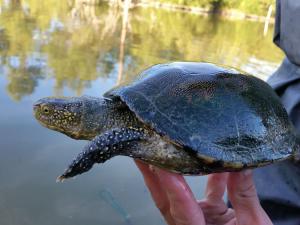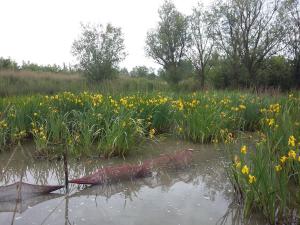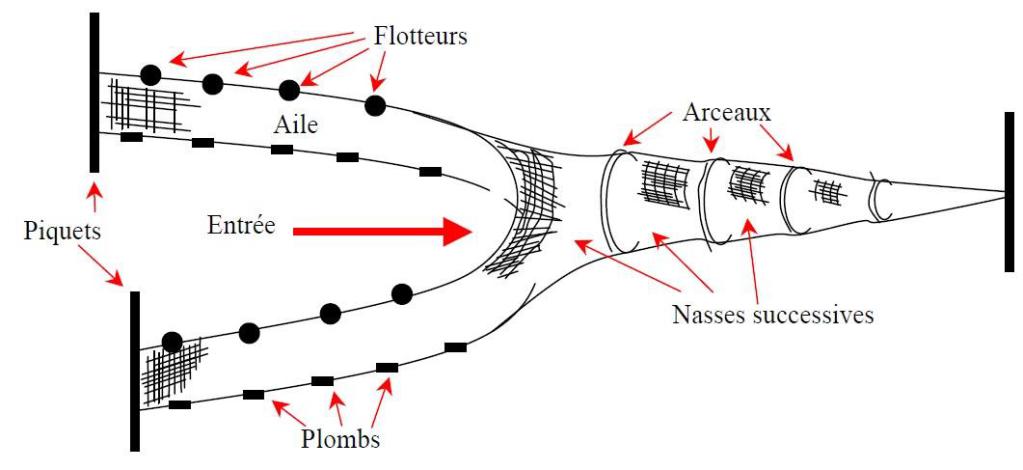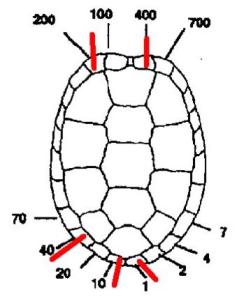Romain Lengagne is a last year student of the Professional Degree program in Environmental Diagnosis at the University of Besançon. Recently, he has been working on a demographic monitoring program on European pond turtles, also called European pond terrapins (Emys orbicularis) at the Research Institute for the Conservation of Mediterranean Wetlands Tour du Valat in France, created by Dr Luc Hoffmann in 1964.
The European pond turtle is a long-living freshwater turtle species living in wetlands surrounded by natural landscapes. It is found in southern and central Europe, West Asia and North Africa and it is on the Red List of IUCN with the designation of “lower risk/near threatened”.
The monitoring program in the Camargue, in the Natural Reserve of La Tour du Valat, aims to control and monitor the population by analysing different data to survey the annual demographic evolution of the population. It is important to note that the European Pond Terrapin (Emys Orbicularis) is an umbrella specie, which means that protecting this species indirectly helps the protection of the other species living in the same ecosystem, and making up the ecological community of its habitat.
To develop this survey, the monitoring can only be done during the turtles’ activity period (from April to August), as they hibernate from October to March.
Romain installs traps every Monday and removes them on Fridays. The traps are designated specifically for turtles: composed of two filet that drives the turtles in the trap, and the trap itself. (See drawing ©Millair)
Each morning, the traps are checked to monitor the individuals in different parts of La Tour du Valat natural reserve’s domain that are included in the protocol.
Once the turtles are collected and examined, the databased is updated. To recognize each turtle, a system of marks in the carapace is used (as shown in the picture below), and when a new individual is found, it is marked with a new number.
The new data are also compared with the data collected in previous years. The relevant information for the study includes sex, age, weight, size of the carapace, and carapace characteristics, such as scars or anomalies. As Romain said: “It is interesting to monitor the anomalies to recognize the individuals better”.
It should be pointed out that the marking of the European Pond Terrapin started in 1967, while the scientific monitoring following the protocol just described before began in 1997. Presently, there are 1,226 marked turtles, and since 1997 the scientific team have carried out 8,903 captures of individuals.
The turtle population depends upon water levels and also on water quality. The main threats for the European Pond Terrapin are habitat destruction, water pollution, competition with exotic species, death caused by road traffic, and the dredging of hydraulic network in inappropriate periods.
Several surveys have been conducted in Tour du Valat on the distances covered by the turtles. The males move more frequently than the females to search for new territories. A leading thesis explains that males decide to migrate to where the sexual competition is lower (Ficheux, 2013). Distances of more than 10 km have been recorded in another area managed by the Parc Naturel Regional de Camargue (Fuentes et Olivier, 2016). A record exists of a male having travelled 18km! ((Fuentes et Olivier, 2016).
 There is some competition with invasive turtle species, such as the Florida turtle, but only two specimens of those have been found in the past 50 years. The invasive species of crayfish Procambarus clarkia is now becoming a prey in the turtles’ diet.
There is some competition with invasive turtle species, such as the Florida turtle, but only two specimens of those have been found in the past 50 years. The invasive species of crayfish Procambarus clarkia is now becoming a prey in the turtles’ diet.
In the end, Romain did enjoy this experience and learned great deal about the biology and ecology of this habitat. He especially enjoyed working on a long term scientific survey like this one, with almost 20 years of data and research on this species. He was very enthusiastic about the set up of such protocols in the field and also about being able to do the comparisons of the data he gathered.
For more information
 Learn more about the Conservation of species programm in Tour du Valat here
Learn more about the Conservation of species programm in Tour du Valat here
You can read the report from its survey (in French only).
Contact







Share